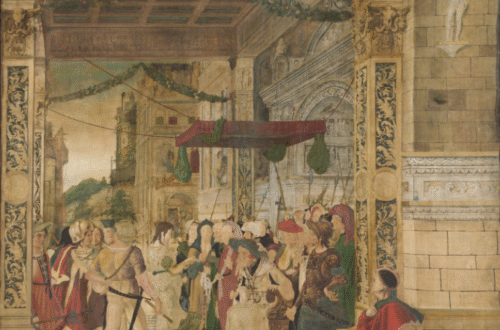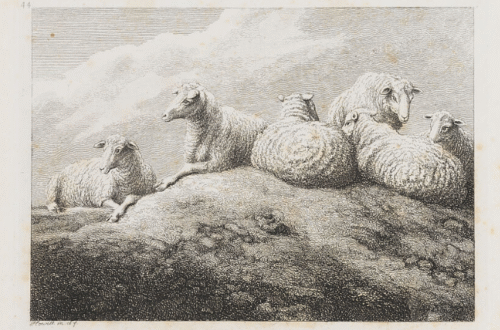One of the more difficult stories in the Old Testament for people to accept as factual is the story of Noah and the Ark. In Genesis 6:5-8 (NKJV):
5 Then the LORD saw that the wickedness of man as great in the earth, and that every intent of the thoughts of his heart was only evil continually. 6 And the LORD was sorry that He had made man on the earth, and He was grieved in His heart. 7 So the LORD said, “I will destroy man whom I have created from the face of the earth, both man and beast, creeping thing and birds of the air, for I am sorry that I have made them. 8 But Noah found grace in the eyes of the LORD.
Think about it. You have one man, one family, one large boat, two of every animal, and a rainstorm that causes the entire world to flood. It rains for forty days and forty nights. Most of us have seen it rain for several days in a row, maybe even forty days, and have never seen enough flooding to destroy the earth.

Some of the more modern Bible scholars have written the story off as merely an example of a Jewish fable. On the other hand, there have been rumors for the past four decades that someone has found Noah’s Ark, some even say on Mt. Ararat. Theories have been explained to show how the ark was once on top of the mountain, which is believed to be a volcano. The volcano erupted around a thousand years ago and carried the ark down through a flow of lava.
Most recently, archaeologists believe they have discovered the final location on Turkey’s Mount Ararat through soil samples which reveal human activity and marine materials during the time of the flood (dating around 5500 to 3000 BC). Yet, many researchers disagree and even disagree on the extent of the flood saying that “those events naturally made their way into the world’s oral and written lore.” Andrew A. Snelling, a geologist and Director of Research for Answers in Genesis says, “We do not expect the Ark to have survived and been available to find after 4,350 years.”
While such theories continue to exist, there is no credible archaeology done to prove that Noah’s Ark exists. However, there are people who desperately want to find it. Christians and Jews would most certainly rejoice if Noah’s Ark were found.
As a Bible story, we accept Noah and the Ark on faith, believing that because it is in the Bible, it has to be true. This story is not told in the form of a historical lesson. It’s an example of God’s salvific act. We are not left standing on the sidelines wondering why God, who is an all-loving God, would carry out this horrendous act of destroying His creation. Instead, we should be grieved as God was grieved seeing His creation only desiring to perform evil acts. This here is an example in the history of humanity where God’s heart was broken.
In Genesis 6:13-14, God proposes a plan:
13 And God said to Noah, “The end of all flesh has come before Me, for the earth is filled with violence through them; and behold, I will destroy them with the earth. 14 “Make yourself an ark…”
The Bible gives the description and measurements in “cubits.” Modern comparisons describe the ark as being about half the size of an ocean liner, the Queen Elizabeth (which is about double the size of the Titanic), and about 450 feet long. Imagine if you took one of each animal from the face of the earth and placed it aboard the Queen Elizabeth. This glorious ship would still not be large enough to hold all the a animals. So, again, there are always people waiting to dispute what the Bible claims.
The Hebrew word, tebah (teebayh) is translated as “ark” from the Latin word “arca.” This translation is often debated, as well as the shape of the ark. Most Bible scholars agree the ark was shaped more like a chest or box-shaped but others believe it to be more of a “floating palace.” Clyde Francisco, a Bible scholar, says “it was certainly not built for sailing but for surviving.” What’s important to note is that there is value in seeing that God had a specific vehicle in mind by which to save Noah, his family, and the birds and animals. God could have placed them all on a raft, and yet still God could have saved them.
The fact is, this event occurred over 4,000 years ago. We do not have a methodology for a reconstruction of how this might have occurred. Some people feel comfortable writing this story off as fiction. But, if one reduces this story to be only a Jewish myth or fable, then does one really believe in God?
God does not seem the least concerned about coming forward to prove His ark existed. One can choose to believe or not believe. The basic synopsis stands: Noah was told to build an ark. Using this ark, God would establish his covenant with Noah. We now see a greater purpose to the Noah and the Ark story. It’s not only about a man, his family, some animals, and a flood. It is about God’s righteous judgment passed against all that is evil. It is about God’s wondrous grace given to save that which is good. And, with this, God was not merely saving a few people aboard an ark. He was saving a multitude of generations of people to follow.
In the Dickson study Bible, The New Analytical Bible (1973), Dickson states “Noah is the last member of the Sethite line of the Antediluvian Age. From Seth to Noah, nine members of that line are given. The race is to be all but obliterated, but it is not only preserved but also the Messianic line. It is of special interest that the preservation of the race is in the line of the Messiah, hence the history of a Savior will be fulfilled in the historical line that has been selected.”.
Luke’s gospel traces the genealogy of Jesus all the way back through Noah in Noah 3:36-38 (NIV):
36 the son of Cainan, the son of Arphaxad, the son of Shem, the son of Noah, the son of Lamech, 37 the son of Methuselah, the son of Enoch, the son of Jared, the son of Mahalalel, the son of Kenan, 38 the son of Enosh, the son of Seth, the son of Adam, the son of God.
In short, we see God’s plan of salvation extends to multiple generations–not limited to one. If people today were to take away the story of Noah and the Ark, then one is destroying one of the basic roots of God’s salvation plan. Furthermore, to not believe in Noah and the Ark is to not believe in God’s plan of salvation. Still, there is another reason we review this story. It’s to remind us that Noah and the Ark symbolize new beginnings.
Noah obeyed God. He built the ark. People probably laughed at him, “Hey, look at that old man, Noah, up there building an ark. Want us to come up and show you how to build a real boat, Noah?…Hey, Noah, where’s the flood…That’s quite the house you are building up there, Noah. You planning on having more kids? You’re crazy Noah!”
Noah built the ark. He did everything God asked him to do. He loaded up the animals and his family. God shut the door and turned on the rain. It rained and rained. And all those people who had no vehicles for survival sank. They all drowned.
The rain stopped, but the waters continued to cover the earth for 150 days. Image by now, everyone was probably getting cabin fever. I mean, “Get those sheep over there some deodorant!” Noah started sending birds out to find land. Then, imagine the day when Noah and his family first stepped out of the ark. It is like an undiscovered country, a whole new world. It was a new beginning. A new opportunity to begin again.
Title: Noah and the Ark | Sermon: January 5, 2003, First Christian Church (Paradise, California)





